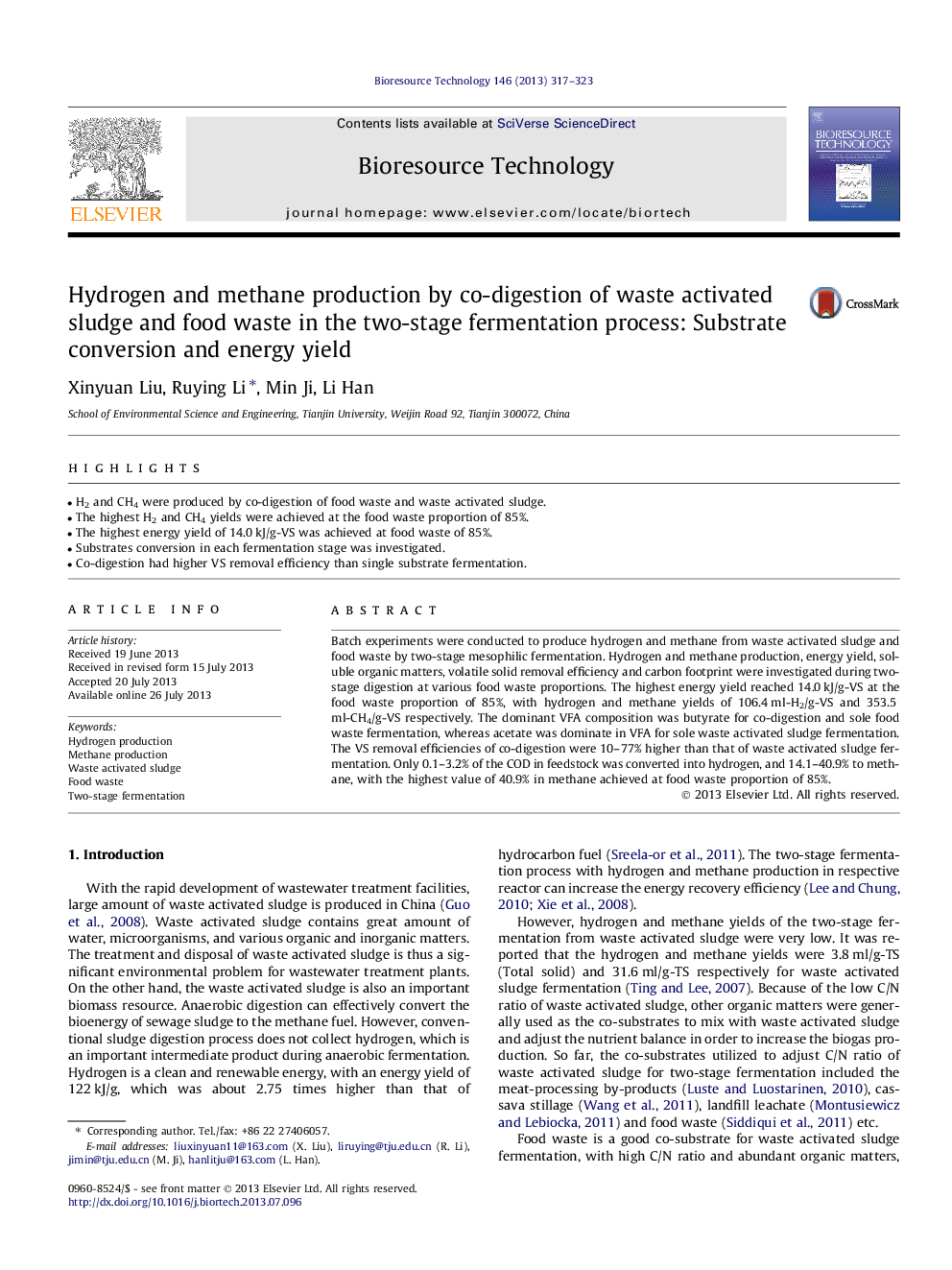| Article ID | Journal | Published Year | Pages | File Type |
|---|---|---|---|---|
| 7080784 | Bioresource Technology | 2013 | 7 Pages |
Abstract
Batch experiments were conducted to produce hydrogen and methane from waste activated sludge and food waste by two-stage mesophilic fermentation. Hydrogen and methane production, energy yield, soluble organic matters, volatile solid removal efficiency and carbon footprint were investigated during two-stage digestion at various food waste proportions. The highest energy yield reached 14.0Â kJ/g-VS at the food waste proportion of 85%, with hydrogen and methane yields of 106.4Â ml-H2/g-VS and 353.5Â ml-CH4/g-VS respectively. The dominant VFA composition was butyrate for co-digestion and sole food waste fermentation, whereas acetate was dominate in VFA for sole waste activated sludge fermentation. The VS removal efficiencies of co-digestion were 10-77% higher than that of waste activated sludge fermentation. Only 0.1-3.2% of the COD in feedstock was converted into hydrogen, and 14.1-40.9% to methane, with the highest value of 40.9% in methane achieved at food waste proportion of 85%.
Keywords
Related Topics
Physical Sciences and Engineering
Chemical Engineering
Process Chemistry and Technology
Authors
Xinyuan Liu, Ruying Li, Min Ji, Li Han,
